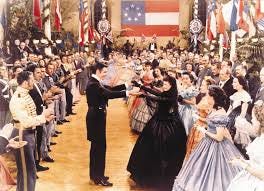Welcome to Second Rough Draft, a newsletter about journalism in our time, how it (often its business) is evolving, and the challenges it faces
If you read this column, you’ve probably heard about how Ben Smith, ex- of the New York Times, and Justin Smith, ex- of Bloomberg, are planning a new news organization, how they were immediately dubbed the Smith Brothers even though they aren’t related, and how they were mocked for saying they aim to appeal to college-educated global readers of English, whom they see as ill served.
I’ve seen only a few hints of what the Smiths are planning, but they are both very smart and talented (Ben is a friend of mine), and I am sure it will be interesting. That’s not, however, what I want to talk about this week. Instead, I want to focus on where I think the real opportunities lie for potential new news organizations.
New local news for the American cities of today
The most exciting opening, in many locales around the country, is for newsrooms founded and led in light of who lives in those cities today. History is not an excuse, but it is an important part of the explanation of how many once-dominant local news organizations were rooted, and unfortunately remain so, in cities and times gone by.
For instance, the Cleveland Plain Dealer was founded in 1842, when Cleveland, a small town, was less than five percent Black. Today the city is about half Black and one-third Latino. When the Los Angeles Times was launched in 1881, that city’s residents included fewer than five percent people of color, with census records reflecting literally none that we would call Latino; today, Latinos comprise roughly half of residents. The Baltimore Sun was founded in 1837 in a city that surely considered itself Southern. At that time, Baltimore was about one fifth Black, with about a fifth of those people enslaved; today, the city is more than three fifths Black, and very much Middle Atlantic.
An exception can be found in Atlanta, where the Constitution newspaper was founded in 1869 in a city that then, like today, was about half Black. But to understand the half of the city for which two leading papers (that later came together) were intended, you need only know that Gone with the Wind and Uncle Remus have their roots in the Journal and Constitution respectively.
At none of the times any of these papers were founded did women have the right to vote—or the opportunity to work at newspapers.
As these institutions seek, in some cases with impressive determination, to transcend their origins even while managing through a secular business crisis affecting the whole industry, it may well prove easier for new newsrooms to truly reflect their modern communities. That is why I am watching Capital B’s initial effort in Atlanta, the Ohio Local News Initiative in Cleveland and the Baltimore Banner, all projects with some initial scale, with such interest. While still small, it is part of why I am so enthusiastic about Outlier in Detroit, where I am on the Board.
One critical question will be whether it is possible to effectively serve these modern communities largely from behind a paywall, as the Banner proposes to do. I am deeply skeptical of that, and if I am right, it will dictate that the future of such new efforts will depend on sustainable philanthropy from donors from large and small.
A new vision of deep stories without endless words
The other opportunities for new newsrooms, or at least new approaches to news, are still even more uncharted at the moment.
While it is simply untrue that longform narrative stories are passé, anyone who has spent time looking at reader behavior on Chartbeat knows that the bar for their successful execution moves ever higher. At the same time, bullet pointed formulaic summaries, while a powerful new form for entrants like Axios, are clearly an inadequate substitute.
Significant rewards are ahead, I think, for the inventors of engaging forms that amass evidence and maintain depth and nuance without relying nearly as heavily on text. A critical part of this will lie in the true integration of audio, video and data with text in ways not yet achieved. What I mean by this is not just a few beautiful heroic examples tracing their roots back to the New York Times’ Snow Fall of almost a decade ago now, but forms that can be executed widely and frequently. Those remain elusive.
Integrating aggregation and news
It continues to amaze me that, more than a quarter century into the consumer internet, aggregation and original news remain as distinct from each other as they do. By and large, the most effective general news aggregators report little original news, while the consistently best generators of original news do fairly little aggregation of stories by others. Again, I think a significant opportunity awaits innovators at this intersection.
One attraction even of a paywalled general news site (I do think that model can work at a national level) could be the sense of comprehensiveness that can only convincingly come from including links to the best content available elsewhere. And it is increasingly easy, as a technological matter, to link multiple logins in a way that makes products seamless; the big social media platforms have already done this. Newsletters seem a special area of opportunity for blending original reporting and aggregation in effective ways. Beyond all that, the best aggregators should have a meaningful advantage in understanding where summaries and digests of diverse accounts will add value—and where more may remain to be profitably reported.
Most new businesses of all sorts fail. That will surely be true in the news business. But as we begin to emerge from the pandemic (soon, I think), one of the many pent up forces I expect we will see play out will be renewed innovation in news. It should be fun to watch, and rewarding to participate.





I am having the best days of my professional career trying to work it out in Charlottesville, Virginia. I've managed to stay afloat as a one-person information shop using Substack, Patreon, and other sources to begin to dream about a sustained future covering my community and getting information out in the way I've always wanted to do. For the first time in my life, I own the fruit of my labor and I hope this benefits the community in the long-run.
Good read, Dick, thanks. Here is another one that your readers might like — apropos your mention of the need for sustainable philanthropy for news: https://www.insidephilanthropy.com/home/2021/3/23/for-local-newsrooms-philanthropy-isnt-charityits-revenue